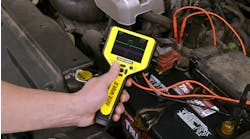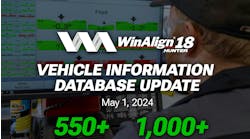In the transportation industry, regulations require tank trucks that haul food-grade oils to be thoroughly washed out before any new product is introduced. To comply with the various local, state, and federal EPA requirements in this regard, facilities that clean tank trucks must find cost-effective water treatment solutions to remove the residual oil in wash water before it is discharged into the sewer and sent to a municipal facility.
Failing such regulatory compliance can be costly. After treatment, if the water contains too much residual oil, municipal water treatment centers can refuse to accept it and levy hefty surcharges and fines.
However, every tank truck wash facility is unique and must accommodate a wide range of variables. These can include differing local or state regulatory requirements, the number of trucks washed, truck sizes, types of oils hauled, oil/water ratios, peak periods of use, changing flow rates, environmental conditions, and facility size and layout.
Exacerbating matters, hydrogenated vegetable oils (palm, soy, canola, etc.) can be particularly difficult to remove from wash water. In such applications, several key factors virtually dictate the ultimate design of an efficient oil removal system: temperature, flow rate, specific gravity of the oil to be removed, and percent of oil solids in the total flow. To accommodate all these variables and sufficiently remove oil from wash water to comply with regulation, the application should be analyzed by professionals and the oil removal solution essentially engineered to meet the specific requirements of the application.
Ideally, these oil removal systems would cost-effectively, continuously, and actively remove food-grade oil no matter the levels of concentration, without costly maintenance or direct supervision. Fortunately, such systems exist today and are growing in popularity.Oil skimmers
When a tank truck wash facility has a pit or sump to collect oily wash water, and the oil in wash water naturally separates into a top layer, an oil skimmer can be utilized to remove the oil from the surface.
The most efficient type of oil skimmer uses a free-floating collector tube that actively and continuously removes the oil and grease as it rises to the surface of the water. As the tube moves across the surface, oil adheres to the outside, then goes through a series of ceramic scrapers that constantly remove the oil, which then drains by gravity into a collection vessel. The skimmer is not affected by water level fluctuation or floating debris and solids, removes very little water in the process, and operates continuously with minimal attention or maintenance.
One successful example of oil skimmer use at a tank truck wash facility involves a Minnesota-based trucking company with a fleet of 250 tanker trucks – 35 of which are used to haul soybean oil. The trucking company cleans its fleet after transportation jobs, and local regulations require it to remove all residual oil from the wastewater before discharge to the sewer. However, when the trucking company reassessed their oil removal process, they found glaring inefficiencies.
To clean out the tankers, the maintenance crew was spraying water mixed with a non-toxic cleaner into the trailers. The oil-infused water collected in holding tanks where the crew had to manually skim the oil from the wastewater’s surface. This practice met local wastewater regulations but was inefficient and labor intensive. The company’s head technician sought a more efficient, cost-effective method to remove oil from the wastewater before it was treated further in an existing dissolved air flotation (DAF) unit.
The company decided to install a tube-type oil skimmer, mounting it directly on the edge of the main wastewater holding tank. Since the installation of the tube-type oil skimmer, the trucking company no longer needs to manually collect sludge from the wastewater, delivering substantial labor savings. The company notes that the oil skimmer, which runs continuously, is so effective it enhances the performance of their DAF unit and reduces the amount of flocking agent required, further reducing costs.
According to the technician, the oil skimmer saved enough time and money to more than pay for its cost within a few weeks, while meeting the city’s wastewater requirements.
Oil-water separators
In applications where the waste oil doesn’t naturally rise to the water’s surface, there is a need for equipment that will facilitate the separation of oil and water so the oil can be effectively removed. These are the conditions that warrant the installation of an oil and water separator with coalescing media. Coalescing media encourages efficient separation by providing the surface area required for non-emulsified oil droplets to combine, or coalesce, forming larger, more buoyant droplets which rise to the surface more quickly and easily.Traditionally designed separators successfully achieve separation of oil and water under ideal conditions, like consistent flow rate, high temperature, and low oil concentration. But an oily water separator can become overwhelmed when flow, temperature, and levels of oil concentration fluctuate and/or exceed the often-narrow design specifications of the oil-water separator tank.
In all cases, proper oil removal following oil and water separation is crucial to keeping a separator running efficiently. Many common styles of oil-water separators, though, utilize passive oil removal methods such as slotted pipes or overflow weirs. Without regular monitoring and manual adjustment from maintenance personnel, these passive removal methods are easily overwhelmed and can allow an oil layer to form, which is a primary cause of performance issues in oil water separators.
While customizing the configuration and options to efficiently remove oil from tank truck wash water today is important, so is working with a partner that can easily make adjustments when circumstances change. As volumes, oil-water ratios, and other factors continue to evolve, adapting and tailoring the oil water separator design to both current and future needs will reliably minimize the cost of compliance as well as labor, operation, and maintenance.
Jim Petrucci is the vice president at Oil Skimmers, Inc. Petrucci has authored many articles, whitepapers, and ebooks for those facing challenges of oily water applications. Oil Skimmers, Inc. – a manufacturer of oil skimmers, oil removal systems, and oil-water separators, specializing in separating and recovering all types of waste oils, greases, and fats from water – is headquartered in Cleveland, Ohio, with factory-trained representatives across the U.S. and around the world.






